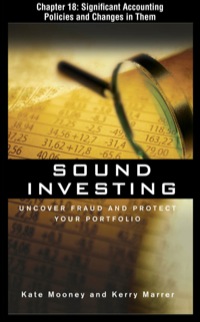Question
Read the excerpt of the article and answer the questions: The Bank of Japan was the first among the major central banks to adopt unconventional
Read the excerpt of the article and answer the questions:
The Bank of Japan was the first among the major central banks to adopt unconventional monetary policy measures. In 2001, the Bank launched Quantitative Easing (QE), which targeted bank reserves to counter the recession following the collapse of IT bubble in the U.S. and continued this policy until 2006. In the aftermath of the GFC, in order to overcome prolonged deflation, the Bank started Comprehensive Monetary Easing (CME) in October 2010 and Quantitative and Qualitative Monetary Easing (QQE) in April 2013,5 expanding its balance sheet, trying to push down longer-term interest rates. Under QQE, in particular, the Bank has purchased an unprecedented amount of long-term bonds, boosting the share of the Banks holdings in the total amount of Japanese Government Bonds (JGBs) from 11.5% at the end of 2012, to 43.2% ($200 million) at the end of 2017. The bank of Japan implemented the relevant policy to main the required reserve ratio at 10% since 2012. To stimulate the economy banking system is encouraged to ease the credit requirements and to lend out all excess reserves. Hint: The means of payment has been cheques.
a) Record the appropriate transaction into the Banking system and Bank of Japan (Central Bank) in year 2017 and briefly analyse the implemented policy and its impact on the economy.
b) Suppose the money lent out was spent and proceeds deposited into another bank who in turn lends out all of its excess reserves. With a simple money multiplier calculate the effect on total deposits.
c) If the public decides to maintain a currency ratio of 20%, calculate the effect on total deposits with the money multiplier. Assume the banks have no desire to maintain an excess reserves ratio.
d) Explain the difference in the results between (b) and (c) with reference to the size of the money multipliers, the number of leakages and the effect on money supply.

Step by Step Solution
There are 3 Steps involved in it
Step: 1

Get Instant Access to Expert-Tailored Solutions
See step-by-step solutions with expert insights and AI powered tools for academic success
Step: 2

Step: 3

Ace Your Homework with AI
Get the answers you need in no time with our AI-driven, step-by-step assistance
Get Started


